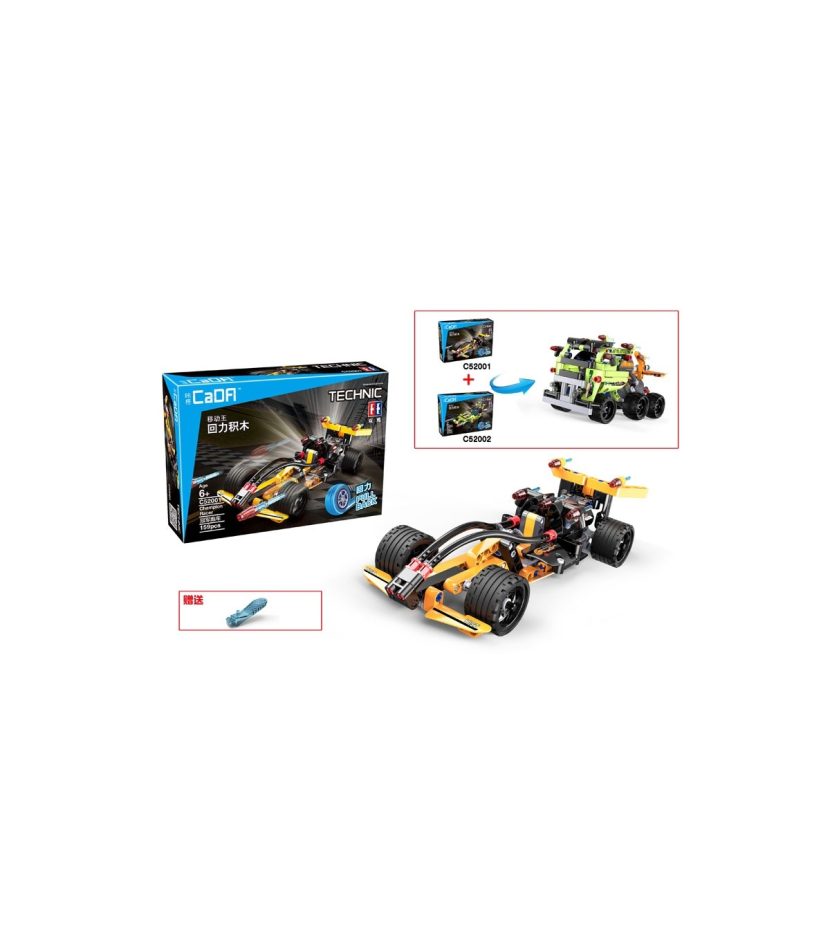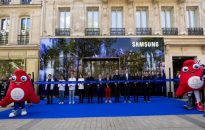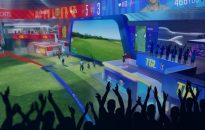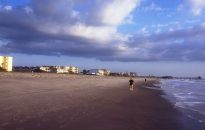Avedesian (right) working with Director of Strength and Conditioning, Rick Franzblau (left), and former graduate assistant turned Olympic Sports Science Director, Shane Bernhardson (center), to understand collected data. Download image December 18, 2024December 18, 2024 By Grace O’Donnell Clemson Athletics is widely reputed for creating athletes primed to perform at the highest level: hundreds of […]


Clemson Athletics is widely reputed for creating athletes primed to perform at the highest level: hundreds of Tiger draftees have entered the pros and turned their dreams into reality after their time at Clemson. None of this would be possible, however, without the program that sets the foundation for their success: Olympic Sports Science.
In November 2021, Jason Avedesian, Ph.D., was appointed Director of Sports Science for Olympic Sports. At Clemson, this includes every sport except football and basketball, leaving Avedesian responsible for 17 varsity sports and roughly 350 student athletes. Though he recently transitioned into a new role as the Director of Biomechanics and Research for the Cleveland Cavaliers, his impact on the University was – and still is – huge.
At the Robert H. Brooks Sports Science Institute’s (RHBSSI) first annual RECESS Symposium in October, Avedesian was honored with the inaugural Friend of the Institute GRIT award. The award was bestowed upon an individual who has worked significantly over the last three years to further the mission of RHBSSI, which is to support and promote the work of Clemson University students, faculty and staff towards enhancing the athletic experience. The origin of Avedesian’s position was, in fact, a co-funded collaboration between Athletics and RHBSSI for the first two years, and this investment has truly paid off.
While he was passionate about all aspects of his position, Avedesian especially emphasized the first prong of the mission: supporting and promoting the work of students. “The biggest thing in my role as Director of Sports Science, especially over the last three years, was growing our student internship program,” he said.
“Really, the whole point of it was for students to get real world opportunities within the athletics environment. They can figure out what they’re passionate about and what they enjoy, and if this is something they’re passionate about making a career out of.”
The internship program is comprised of a semester-long, science-based curriculum dependent on the students’ interests. The positions range from performance science to data analytics, research and design, and technology efficiency and implementation.
Claire Sumwalt, senior biomedical engineering major and Olympic sports science intern, is one such student benefitting from Avedesian’s passion even after he left the program.
“The Olympic sports science program allows me to connect a hobby of mine with my biomedical engineering studies,” she said. “I am so thankful for a program that allows for students to be so creative and passionate.”
Previous interns have gone on to become graduate assistants, earned their doctorate in the sports sciences and been selected to work for professional sports organizations. The sports science skillset as a whole translates to dozens of other fields, making these interns highly qualified and marketable.
In his three years at Clemson, Avedesian oversaw all sports science initiatives across Clemson Olympic sports in partnership with RHBSSI. He credits his interns with helping him manage the volume of projects, saying, “The biggest thing with the student interns, having so many sports and hundreds of athletes year round with different training and performance needs, was helping me scale out different initiatives.

“We wanted to scale out sports science to as many teams and student-athletes as possible.”
Putting these words into practice meant creating quantifiable initiatives. Avedesian landed on five condensed starting points: to enhance student-athlete health and well-being, to foster performance team collaborations for student-athlete monitoring and education, to maximize proficiency and efficiency in technology usage and sports science analytics across Clemson Olympic sports, to conduct and publish peer-reviewed scientific research and to develop strong and lasting partnerships between Clemson athletic and academic groups.
Avedesian is still an external committee member for a Clemson bioengineering student’s baseball-oriented doctorate research, demonstrating the crossover of research, analytics and team collaboration all while working towards the common goal of enhancing student-athlete health.
In addition to the growth and development of the student intern program, the engineering side of Avedesian’s brain pushed him towards a specific interest in technologies.
“Things like force plates, GPS and sprinting technology help to quantify different metrics within our athletes across different sports. Understanding the different game demands in soccer or lacrosse or volleyball helps them reach peak performance,” he said.
Now that he works with the 2016 NBA Champions, his focus is more honed on the biometrics of one specific sport rather than spread across over a dozen. The biggest similarity between the positions, he found, was the technology employed.
“I’m still using force plate technologies and external load monitoring tech. The data is going to be different because this is basketball specific, but the questions I’m trying to answer are the same.
“For example – what are the true demands of the sport? This means reverse engineering practice plans and working around injuries for the best possible performance,” he said. “It’s not necessarily preventative, more so trying to get a holistic understanding of each athlete.”
A benefit of his roster size shrinking from 350 at Clemson to 15 in Cleveland is that he has been able to dive deeper and understand demands on an athlete-by-athlete basis. By looking at each individual’s strengths and weaknesses, he can create a stronger team as a whole.
“At the end of the day, the main goal is athlete health. We want to keep athletes on the court, and from a longevity standpoint athletes are more likely to keep playing if their wellbeing is taken care of.”
Another difference between his title with the Tigers and the Cavaliers is the magnitude of data Avedesian has access to. Thanks to NBA data sharing agreements, he can see league-wide data of other players and teams to help him develop unique insights for his own players.
This becomes especially crucial due to the wide variety in athlete anthropometrics on any given team: a seven-foot center will have a considerably different movement profile than their six-foot point guard teammate. Considering all the contextual factors of minutes played, position favored and whether they specialize in offensive or defensive play helps Avedesian help them.

Moving forward, Avedesian plans to stay in Cleveland for a while, but he has not forgotten about his time at Clemson. “I think it’s pretty cool to receive it,” he said of his GRIT award. “I have had a great relationship with a lot of our academic partners in the three years I was there. It’s rewarding to see the successes of our students and the sports science program in such a short period of time. Seeing them go out to the workforce and finding good mentors as I did throughout my academic career is incredible.
“In a university setting, sports science is unique due to the relationship between sports science and academics – it can’t be a one-sided affair, there has to be people meeting in the middle, and I loved being able to translate information and knowledge between both stakeholders.” This is indeed the mission of the RHBSSI.
Clemson recently welcomed Avedesian’s former graduate assistant in Olympic Sports Science, Shane Bernhardson, to take up the mantle as director.
“I am excited to have the opportunity to come back to Clemson and continue building the sports science program,” he said. “I look forward to working with our support staff, student interns and academic partners for the years to come.”
Get in touch and we will connect you with the author or another expert.
Or email us at news@clemson.edu














